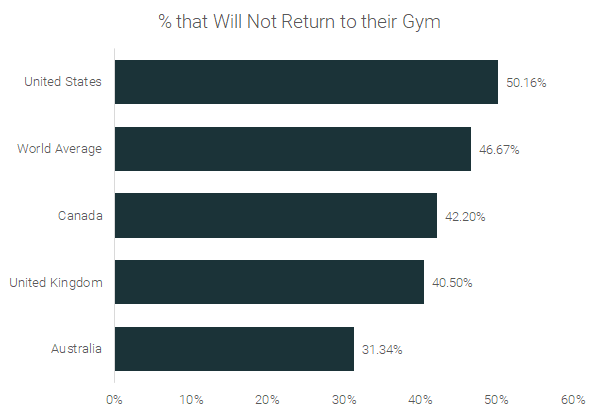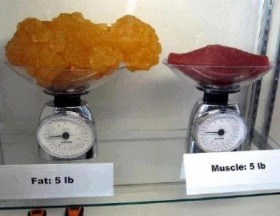
Did The Pandemic Cause Us to Lose Sight on The Importance of Strength Training?
When closing mandates went into effect during the early stages of the COVID-19 pandemic we experienced life without gyms / fitness centers. At the time, most of us didn’t have a decent “home gym” so we needed to find ways to keep active with minimal to no equipment at our disposal. Over the past two years, I have met a handful of people who either lost motivation to work out or shared with me that they only do cardio. This cardio-only trend made me want to dive a little deeper into the pandemic’s role of creating this illusion that cardio is enough to achieve all fitness goals. My exercise science college curriculum and CSCS exam prep taught me that a cardio-only routine can ultimately lead to negative health effects. I know I’m in good company when I say a world without access to dumbbells, barbells, squat racks, medicine balls, kettlebells, and free-motion machines is a nightmare. However, many people didn’t seem to care at all that gyms were closing.
Cardio Became the Go-To
If there is one silver lining to this pandemic, a handful of inactive individuals started to exercise from home. The most popular activity just so happened to be jogging / running, likely because it was a way to get out of the house. According to the Recreational Running Study conducted by World Athletics & Nielsen Sports, 13% of all runners began running in 2020, the majority of whom stated COVID-19 played a part in their decision. They also found that 22% of all runners claim to run more often than they did previously because of COVID-19 and 20% of this group said they will continue to run more. While this is indeed a good thing, it’s important to understand that running takes its toll on the body and is known to cause a laundry list of overuse injuries like plantar fasciitis, iliotibial band (ITB) syndrome, Achilles tendonitis and shin splints just to name a few. Runners can significantly reduce their risk for such injuries by supplementing their running with functional strength training. While activities like running, jogging, and cycling certainly help with short-term weight loss and are beneficial for cardiovascular system efficiency, developing muscle mass is key for healthy body composition and longevity. According to Harvard Medical School, after you turn 40 years old and continue to age, you lose 1% of your bone mass each year. Building muscle mass by means of strength training can slow that bone loss and reduce one’s risk for developing osteoporosis. It’s troubling to see how many people seem to be unaware of this. While there were many active folks chomping at the bits for their gym to re-open, many were reluctant to go back. Why did we suddenly convince ourselves that all we need to do to be healthy is to run, ride a bike, and do some bodyweight exercises?
Gyms Were Wrongfully Deemed Non-Essential
In the Spring of 2020, some interesting data was collected by ‘RunRepeat’ where they surveyed 10,824 gym members to learn if they planned on returning to their gyms upon reopening.

Results showed that 50.16% of Americans stated they would not return to their gyms upon reopening. Sure, covid-phobia certainly played a role. But I also believe a big contributor to this hesitancy is there’s an abundance of people out there who are misinformed on the risks associated with neglecting strength training. Another thing to consider is the fact that there are many people out there who need guidance from an experienced trainer to help them exercise safely. Having administered functional movement screens on people from all walks of life, I can promise you most adults out there are lacking the mobility and baseline strength needed to exercise effectively without hurting themselves.
Too Much Cardio Can Hinder Weight Loss Goals
Is cardio no longer helping you achieve your weight loss goal? If cardio is the only form of exercise that one performs and he/she overdoes it, they will eventually reach a plateau, making healthy weight loss no longer achievable. While some level of body fat is needed to serve as a protective cushioning for vital organs, cardio overkill can increase fat stores. When someone does too much cardio, the adrenal gland receives a signal to release high levels of cortisol. This is worrisome because cortisol is a stress hormone that increases sugars (glucose) in the bloodstream. All that circulating cortisol will instruct the brain to store fat, which inhibits the ability to process sugar, ultimately resulting in weight gain. To make matters worse, all that cardio might be making you weaker as well. Another negative side effect linked to excessive cardio is loss of muscle tissue. During a long run for example, when carbohydrate and fat stores are tapped out, the body will burn muscle mass for energy.

This photo comparing 5 pounds of fat to 5 pounds of muscle tissue highlights the importance of building muscle and at the same time debunks the myth of “weight training makes you bulky.” Muscle tissue occupies much less space throughout the body therefore improving body composition. Healthy levels of muscle tissue will also enhance calorie expenditure throughout one’s day, even while resting.
The message I’m trying to get across is that cardio is not the only answer for every fitness-related goal, especially sustainable weight loss. Let me rephrase that, it’s not weight that we want to lose, it’s fat we want to lose. Replacing body fat with lean muscle mass by means of progressive overload strength training, you will accomplish that goal. In the words of strength coach Ben Bruno, “strength training should be the entrée and cardio should be viewed as a side dish.” If you’re unsure of how to start a strength training routine, search for qualified trainers in your area for help.
Michael has been a strength coach at Olympia Fitness and Performance for three years. Michael graduated from Rhode Island College where he studied Community Health & Wellness with a concentration in Wellness & Movement studies. After graduating, Mike went on to get his CSCS (certified strength and conditioning specialist) through the NSCA. He is also a Certified Speed and Agility Coach, as well as a TPI certified coach. In his three years as a strength coach, Mike has helped clients from all walks of life improve their fitness levels. He has a strong passion for helping young athletes not just improve their athletic performance, but also helping them build confidence.
Sources
- Rizzo, Nicholas. (2021, August). Gym’s Re-opening: 46.67% of Members Won’t Return (Study). com. https://runrepeat.com/gyms-reopening-coronavirus
- Nielsen Sports. (2021, April). Recreational Running Consumer Research Study. https://assets.aws.worldathletics.org/document/60b741d388549ceda6759894.pdf
- Harvard Health Publishing. (2021, April). Slowing Bone Loss With Weight-Bearing Exercise. https://www.health.harvard.edu/staying-healthy/slowing-bone-loss-with-weight-bearing-exercise

